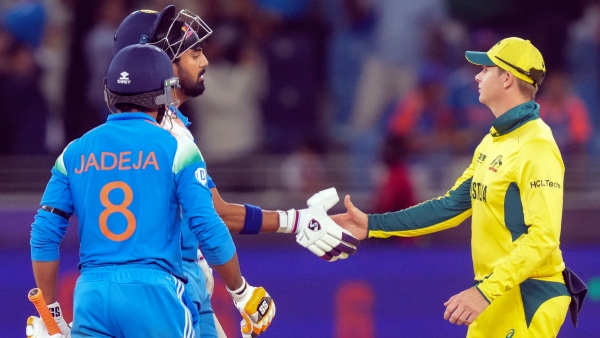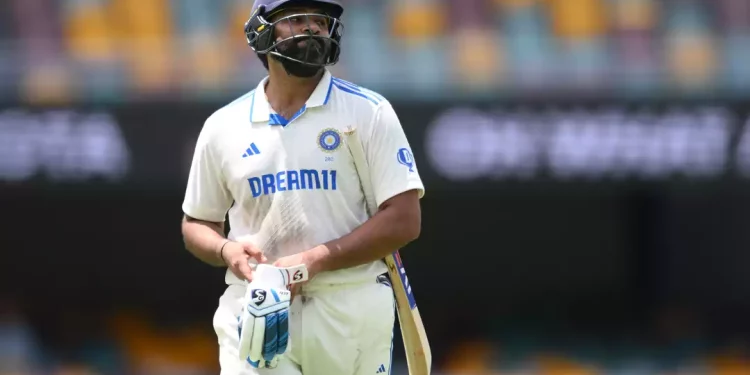
For many years, Australia’s second string has been the top-performing team in cricket. However, on Tuesday they will face off against one of the sport’s current ODI powerhouses: India’s top-order players.
The seamers, namely Nathan Ellis, Spencer Johnson, and Ben Dwarshuis, all featured in Australia’s recent game against Afghanistan and collectively have 20 ODI appearances. As for India’s top three players, they have a whopping 91 ODI centuries between them.
Australia consistently dominates in major tournaments and has a winning record in crucial matches. The players in yellow and blue clearly demonstrate their superior skills, making it evident that this semi-final is heavily one-sided.
Before we proceed, a few things to note. Ellis has only played 11 ODIs due to his exceptional performances in Australia’s T20 tournaments, particularly the Big Bash League. His bowling style, which includes bustling medium-pace and a variety of variations, should be well-suited for the dry Dubai pitch where the match will take place. It is safe to anticipate some finger-rolling action from Ellis when he takes the ball on Tuesday.
The new Johnson, known for his height, dominant left arm, and fast reflexes, has played only 13 international matches. While some may be tempted to draw comparisons to another famous Johnson, it is still too early to do so. However, fans can anticipate skilled performances from this Johnson during the middle overs of the ODI game, which have evolved into a strategic battleground after being dismissed as dull for many years.
As teams aim to survive the middle overs unscathed, they often rely on their key wicket-takers to lead the attack. This strategy often results in either batting collapses or strong counter-attacks from the opposition. Could Johnson prove to be a dominant force during this crucial phase? His current average of 59 in his first five ODIs suggests he has the potential to do so.
Dwarshuis, on the other hand, has the lowest chances of making it onto the field. With only four ODIs and even fewer T20Is under his belt, he may not be the first choice for Australia on a spin-friendly Dubai pitch. The Aussies may turn to legspinner Tanveer Sangha, who has participated in three ODIs.
Perhaps there is a sense of wariness towards facing Australia for India, as they have been a long-standing rival and a consistent obstacle in major tournaments. However, if there is an area where opponents can capitalize on Australia’s weaknesses, it would be their bowling attack.
Moreover, India possesses a strong advantage over Australia. Notably, both Virat Kohli and Shubman Gill have scored centuries in this tournament. Additionally, Shreyas Iyer leads the Indian batters with a total of 150 runs. In the recent match against New Zealand, even Hardik Pandya and Axar Patel showcased promising performances at the crease.
Australia is facing some difficult choices right now. They chose to include Dwarshuis in their lineup, likely due to England’s struggles against left-handed pace. In the previous match, Dwarshuis performed well and took 3 wickets for 66 runs, and he also had a strong showing against Afghanistan.
This has created a dilemma for the selectors – if they only play two fast bowlers on Tuesday, who will be left out? Ellis has consistently performed in domestic competitions, while Johnson adds left-handed pace. Is it worth taking a chance with a third fast bowler? It should also be noted that Dwarshuis has a range of slower deliveries and variations at his disposal.
Regardless of who takes the field for India, they are well-prepared to dominate. Potentially even crush their opponents into oblivion. Although Adam Zampa is part of Australia’s bowling line-up, he can only bowl one fifth of their overs. The question is, where will the other 20 overs of spin come from (approximately 30 in total)? Glenn Maxwell may contribute seven or eight overs, and Travis Head could also pitch in with a few. However, Steven Smith no longer seems interested in bowling. Even if Sangha or the left-arm spinning all-rounder Cooper Connolly join the team, it still does not address the issue of inexperience in their bowling department.
This is the match where India should dominate against Australia.
It is widely known that other teams view India as having significant advantages in this tournament. The team has dominated all three of their opponents, leading to a decision dilemma – should they exclude Varun Chakravarthy if only three spinners can be selected against Australia?
India’s strongest advantage in potentially eliminating Australia from this tournament lies within their batting. The likes of Kohli, Rohit, Gill and the rest of the team will be up against formidable opponents such as Ellis, Johnson, and Dwarshuis. There are evident disparities for India to capitalize on, regardless of past scenarios.



















